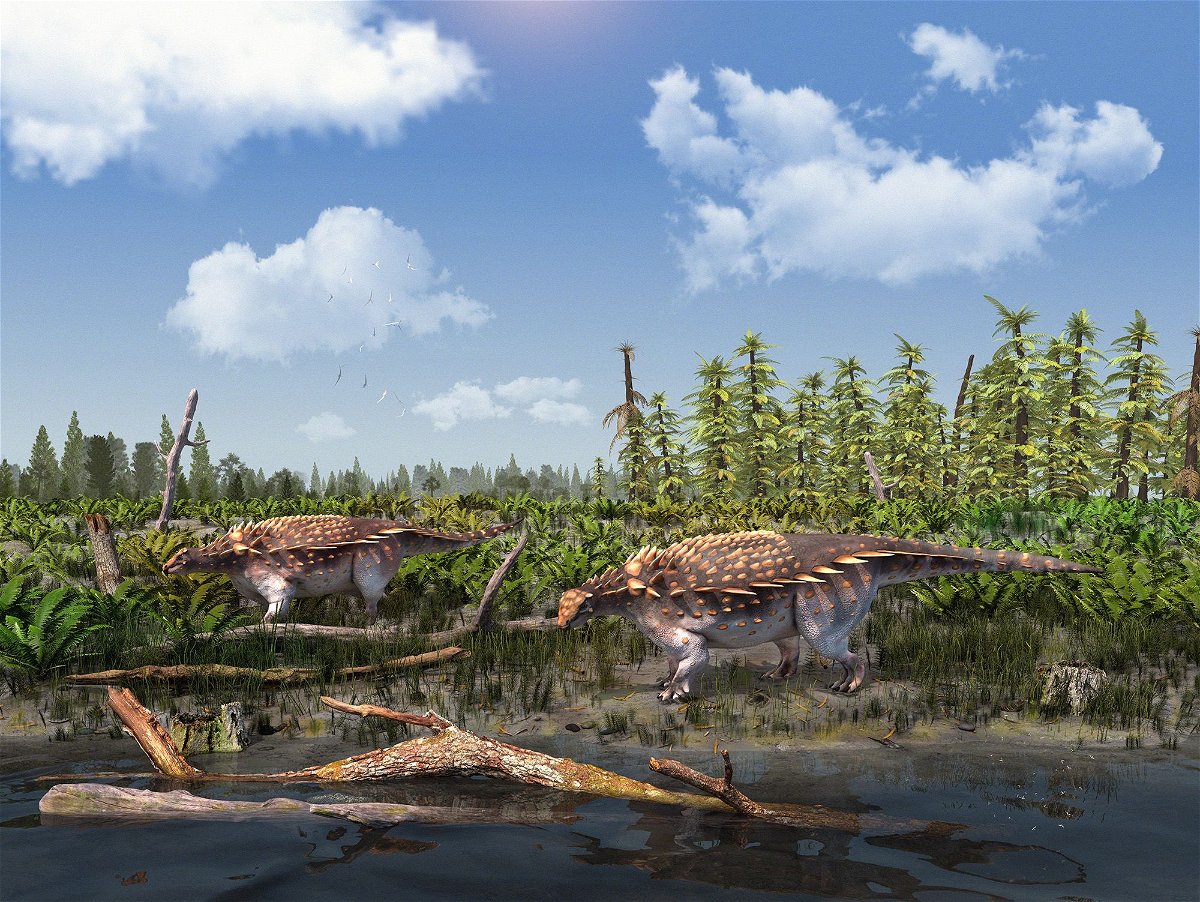New dinosaur with blade-like spikes for armor discovered on UK’s Isle of Wight

The new armored dinosaur was discovered on the Isle of Wight
By Jack Guy, CNN
(CNN) — A new species of dinosaur with blade-like spikes for armor has been discovered on the Isle of Wight, off the south coast of England.
Named Vectipelta barretti, it is the first armored dinosaur, or ankylosaur, to have been found on the island in 142 years, according to a statement from London’s Natural History Museum, where several of the researchers who discovered the dinosaur work.
The dinosaur would have lived during the Early Cretaceous period, 145-100.5 million years ago, the museum said.
There are few fossils dating from the period worldwide, which some believe suggests there was a mass extinction at the end of the Jurassic period, which preceded it.
Given the lack of fossil record from the Early Cretaceous period in other parts of the world, the Isle of Wight is vitally important for our understanding of what happened, the museum said.
“This is an important specimen because it sheds light on ankylosaur diversity within the Wessex formation and Early Cretaceous England,” said study lead author Stuart Pond, a researcher at the Natural History Museum.
“For virtually 142 years, all ankylosaur remains from the Isle of Wight have been assigned to Polacanthus foxii, a famous dinosaur from the island, now all of those finds need to be revisited because we’ve described this new species.”
The new species has several differences to Polacanthus foxii, which was previously the only ankylosaur known to have lived on the island, with variations in neck and back vertebrae, as well as the pelvis and the spiked armor.
The team’s analysis showed that Vectipelta barretti is most closely related to Chinese ankylosaurs, suggesting dinosaurs were able to move between Asia and Europe in the Early Cretaceous.
The dinosaur is named after Professor Paul Barrett, who has worked at the museum for 20 years.
“I’m flattered and absolutely delighted to have been recognised in this way, not least as the first paper I ever wrote was also on an armoured dinosaur in the NHM (Natural History Museum) collections,” he said in the statement.
“I’m sure that any physical resemblance is purely accidental,” he added.
The paper is published in the Journal of Systematic Palaeontology, and the team believe more new species will be discovered on the Isle of Wight, an important source of dinosaur fossils, in the future.
In June 2022, scientists identified the remains of a spinosaurid, a predatory dinosaur with two legs and a crocodile-like face, on the island.
It would have measured more than 10 meters (about 33 feet) in length and weighed several tons, making it one of Europe’s biggest land-based hunters.
The-CNN-Wire
™ & © 2023 Cable News Network, Inc., a Warner Bros. Discovery Company. All rights reserved.
CNN’s Catherine Nicholls contributed to this report.

